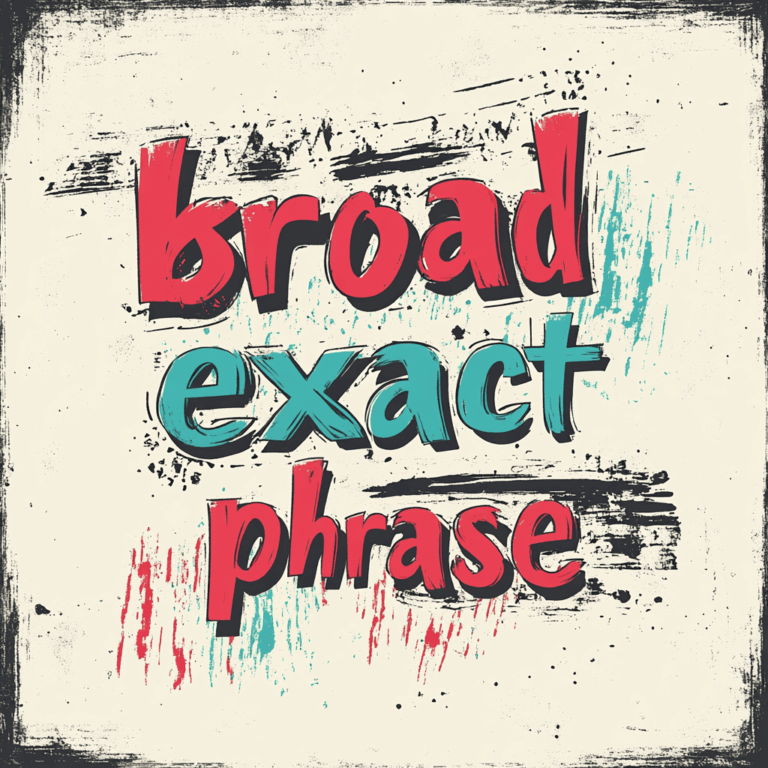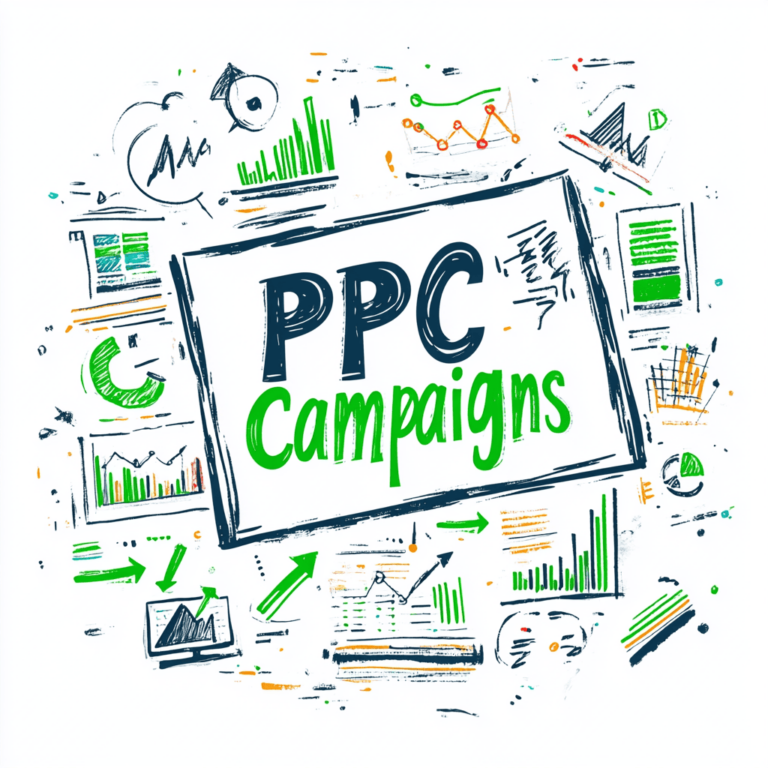Pay-per-click advertising is an excellent way for businesses to drive traffic and acquire leads. However, for companies unfamiliar with this marketing channel, the learning curve can be quite steep and, in many cases, costly.
While making mistakes is the way that we learn, in the world of PPC advertising (or any form of marketing), frequent missteps can quickly lead to wasted ad spend and missed opportunities. Rather than figuring out the best course of action through trial and error, it is much more effective to take a proactive approach — learning from other people’s mistakes.
This way, you can avoid costly errors and get the most out of your PPC campaigns right from the get-go. In this article, we’ll dive into 8 common PPC mistakes that businesses make, offering insights into where many campaigns can go wrong. Let’s jump in

1. Lack of Clear Campaign Goals
To kick off the list of the most common PPC mistakes marketers make is not setting clear objectives from the start. The reason this is so important is that without establishing what you are trying to reach, you have no way to track or measure the success of your campaigns.
Think of it this way: launching a PPC campaign without an end goal in mind is the same as setting off on a journey without a map or a clear destination. While you might get somewhere worthwhile, there is no guarantee that is where you wanted to end up.
Furthermore, you won’t know if you are still on the right track until it is too late. Don’t fall victim to this PPC mistake, ensure that you have a clear objective in place from the start. Without a well-defined goal, even the best-crafted campaigns risk falling short of their full potential.

2. Thinking That Autopilot Is The Way to Go
Another common misstep businesses make is thinking they can run their campaigns on autopilot. What I mean by this is that they set up their PPC campaigns once and assume that all the work required on their part is over. However, this couldn’t be further from the truth.
The thing is that PPC is not something you can just launch and then forget about it. Taking this route would lead to wasted resources, inefficient campaigns and missed opportunities that could have been capitalised on with proper campaign management.
To get the best results, your campaigns will require continuous monitoring, testing and optimisation. By constantly keeping an eye on your adverts, you can figure out which elements are underperforming and make the necessary adjustments to get back on track. Without this ongoing attention, your campaigns face the risk of becoming inefficient leaving you with high costs and low returns.

3. Not Understanding The Different Match Types
Google ads have three different keyword types that are available to marketers. Not understanding how each of these match types functions can quickly translate to inefficient targeting and wasted ad spending. Here is a quick look at the 3 different keyword types, using “organic coffee beans” as an example:
Broad match: As the name implies, the broad keyword type will trigger your advert for search terms that loosely match your keyword. For instance, if your target keyword is “organic coffee beans,” your ad might show up for terms like “best coffee beans” or “organic coffee.
Exact match: When using exact match, your advert will only display when someone searches for the exact term or very closely related variations — “organic coffee beans”.
Phrase match: Think of phrase match as a balance between broad and exact match. With this keyword type, your advert can display for terms that include your exact term even if it has additional words coming before or after it. For example, searches like “organic coffee beans for sale” or “buy organic coffee beans” would trigger your ad.
While broad match keywords provides the widest reach, it could result in less relevant traffic. Whereas exact match limits your reach, but ensures that you’re targeting users who are specifically searching for your exact product.
Lastly, we have phrase match. It offers a middle ground, allowing for some flexibility while still maintaining relevance. Understanding when to use each match type helps ensure your ads reach the right audience while preventing unnecessary spending on irrelevant searches.
4. Not Targeting Long-Tail Keywords
Long-tail keywords are terms that are more specific and include longer phrases compared to regular keywords. In the world of marketing, long-tail keywords are like little hidden gems. While these search terms generally have a lower search volume, they are less competitive and usually have a lower cost-per-click (CPC).
As these keywords are more specific, they are typically more targeted. Meaning, that while these search terms won’t bring as much traffic as broad keywords, the users they do bring, will have a much higher purchase intent. This makes them a no-brainer for your PPC campaigns as they attract higher-quality leads who are more likely to convert.
5. Failing To Implement Negative Keywords
Almost all campaigns should include negative keywords. Using these negative search terms prevents your ad from showing up for irrelevant keywords. This ensures that your advert is only displayed to users who are genuinely interested in your offering. Without negative keywords, your ads could appear for unrelated or low-intent searches, leading to wasted ad spend and poor conversion rates.
For example, if you were running a campaign for organic coffee beans with the intention of wanting people to buy your product, you wouldn’t want to show up for searches such as “free organic coffee beans” or “coffee bean art.” Both of these terms are irrelevant and would likely attract users who have no intention of making a purchase.
Therefore, by adding “free” and “art” as negative keywords, you can filter out these searches. This ensures your budget is spent on high-intent users actively looking to buy your product. Failing to implement negative keywords means you risk paying for clicks that will never convert, ultimately lowering your return on ad spend.
6. Sending Traffic to a Website Instead of an Optimised Landing Page
This is one of the most common PPC mistakes many marketers make. In reality, you would think sending ad traffic to your website is a safe bet. However, this is not the case. If your goal is brand awareness, then this approach is more than fine and would work wonderfully.
That said if the objective is conversions — which it is for most businesses when they run PPC ads — then you’re leaving opportunity on the table. Allow me to explain: When users click on your ad, they expect to land on a page that directly aligns with what was promised in the ad copy.
If they’re instead sent to a generic homepage or an unrelated page, they’re forced to search for the information they want. All of this adds friction that could result in the visitor — who might have been ready to make a purchase — abandoning the page out of frustration.
In layman’s terms, every extra step a user is forced to take can reduce the overall likeliness of them converting. According to research, the average conversion rate that marketers usually see for Google Ads is around 3.5% — this number could differ a lot depending on the sector your business operates in.
On the other hand, a well-optimised landing page is specifically designed to match the intent of the ad. Ensure your landing page is relevant to your advert and that it is optimised for conversions, it will not only improve user experience but also maximise your return on ad spend.
Generally speaking, sending traffic to your website is not really a mistake. However, if your aim to get customers to convert
7. Neglecting Your Quality Score
Your Quality Score is one of the most important yet often overlooked aspects of running a successful PPC campaign. Think of it as Google’s way of grading your adverts. The grading system is based on your ad’s relevance, user experience and expected performance.
The higher your Quality Score, the lower your cost-per-click and the better your ad placements. In other words, Google rewards advertisers who create relevant, high-quality ads.
But when businesses neglect their Quality Score, they end up paying more while getting less visibility — essentially throwing money away. So, what affects your Quality Score? Here’s a quick look at the main factors:
Ad Relevance: How closely your ad matches the search intent of the keywords you’re targeting. In simple terms, if your ad doesn’t align with what users are looking for, your score takes a hit.
Landing Page Experience: If users click on your advert but immediately leave (bounce) when they land on your page, Google will assume your page is not valuable enough. To help you figure out whether your landing page experience is up to standard, ask yourself these questions:
Does my landing page load quickly?
Is it directly relevant to my ad?
Is the design user-friendly?
Expected Click-Through Rate (CTR): Google predicts how likely people are to click on your ad based on its relevance and past performance. A low CTR signals a weak ad, which lowers your Quality Score.
So, how do you improve it? Start by ensuring your ad copy aligns with your keywords, your landing page delivers exactly what was promised and you regularly optimise underperforming ads. By keeping your Quality Score high, you’ll spend less per click and see better overall performance.

8. Not Tracking Conversions Properly
This a common ppc mistake that many newcomers make. If you are not tracking your conversions properly, you are essentially flying blind. In other words, you are basically guessing what’s working and what’s not. That means you could be wasting money on ads that aren’t bringing in real results.
Without clear data, you won’t know which ads, keywords, or audiences are actually driving sales. This makes it much more harder to optimise your campaigns and get the best return on your investment.

Getting The Most Out of Your PPC Campaigns
To help you get the most out of your campaigns, ensure you actively avoid the PPC mistakes where so many other advertisers have gone wrong. This means setting clear goals from the start, using negative keywords to filter irrelevant traffic, targeting the right audience and constantly fine-tuning your ads. In addition, don’t forget to track your conversions and pay attention to your Quality Score.
By focusing on these areas, you’ll maximise your ROI, reduce wasted spend and run campaigns that generate meaningful results. The key is to continually refine your strategy by doubling down on what’s working and cutting back on what’s not.
With consistent effort, you’ll improve your entire approach and ensure your campaigns drive the success your business deserves. If you are ready to see better results and level up your campaigns, contact us today. Let’s optimise your strategy together and unlock the full potential of your PPC campaigns.